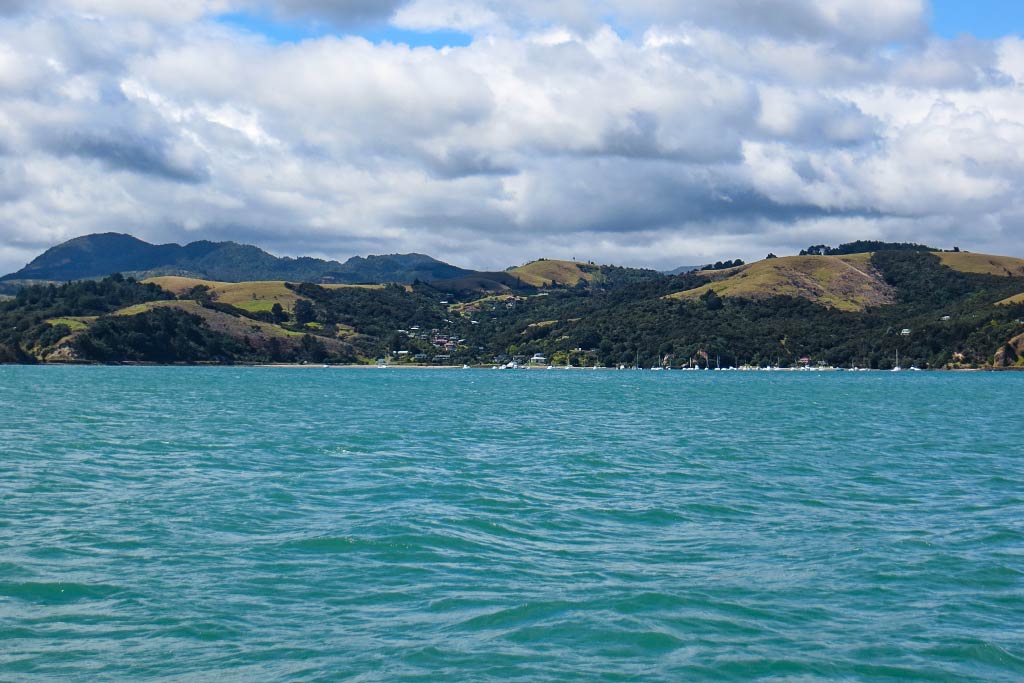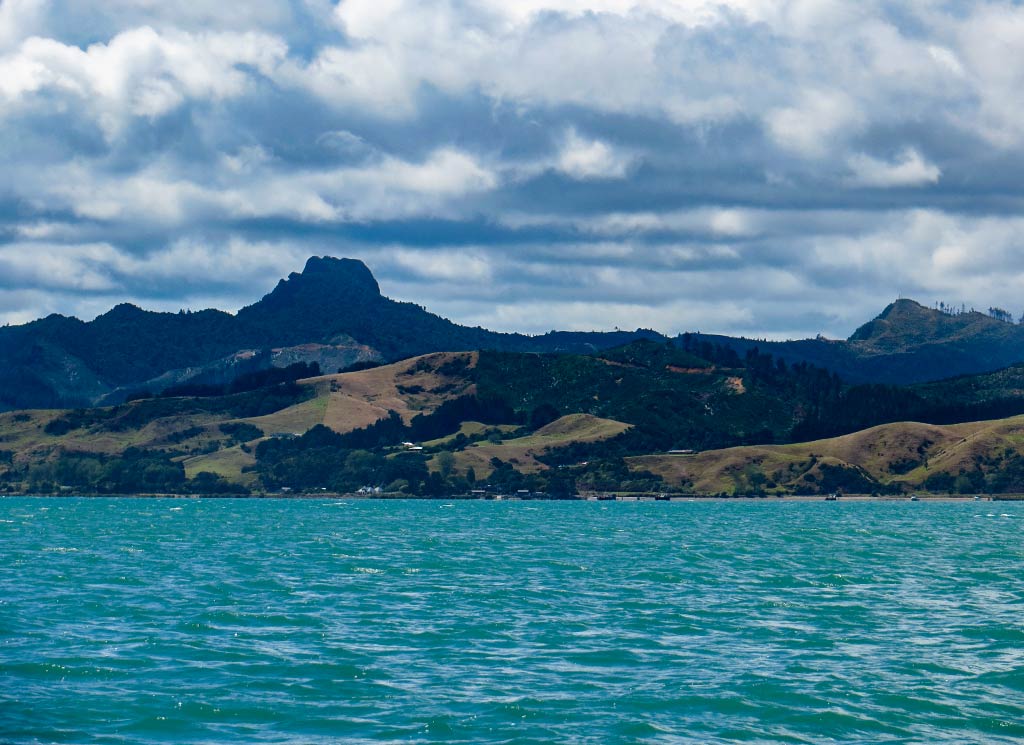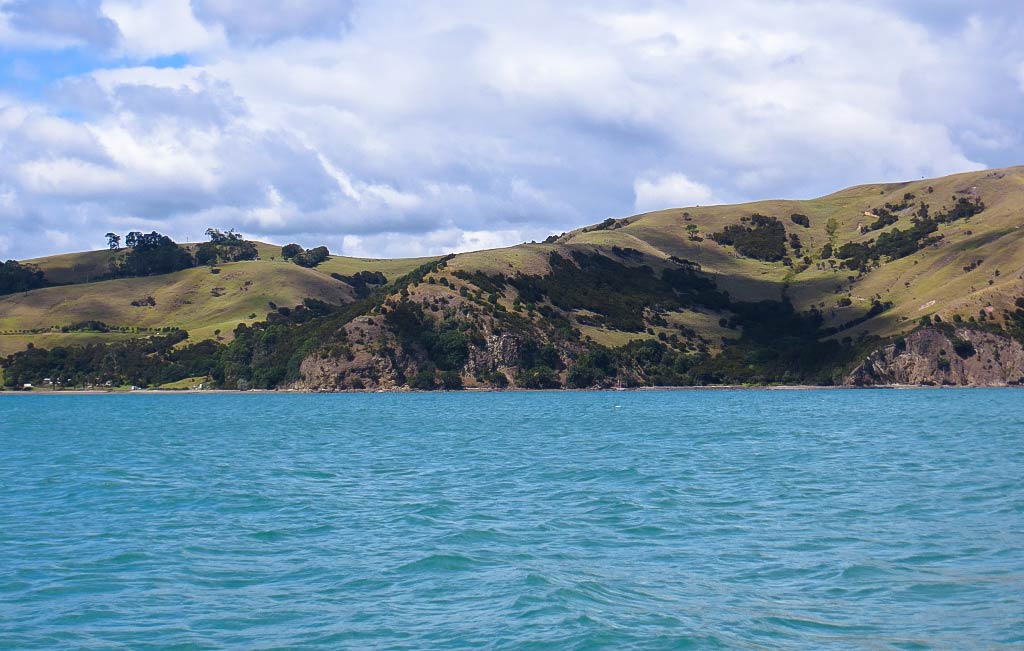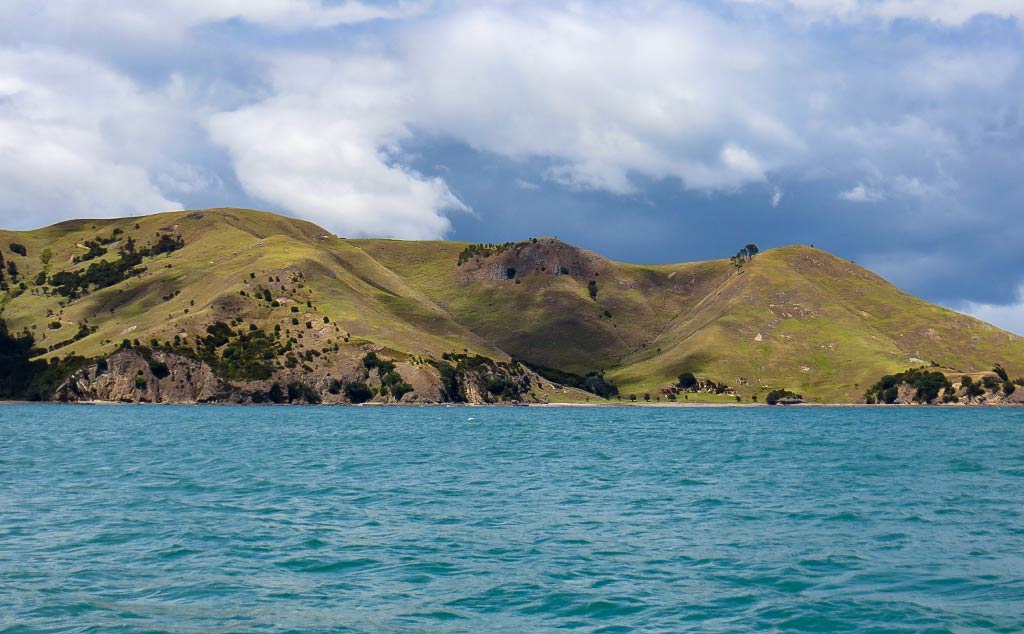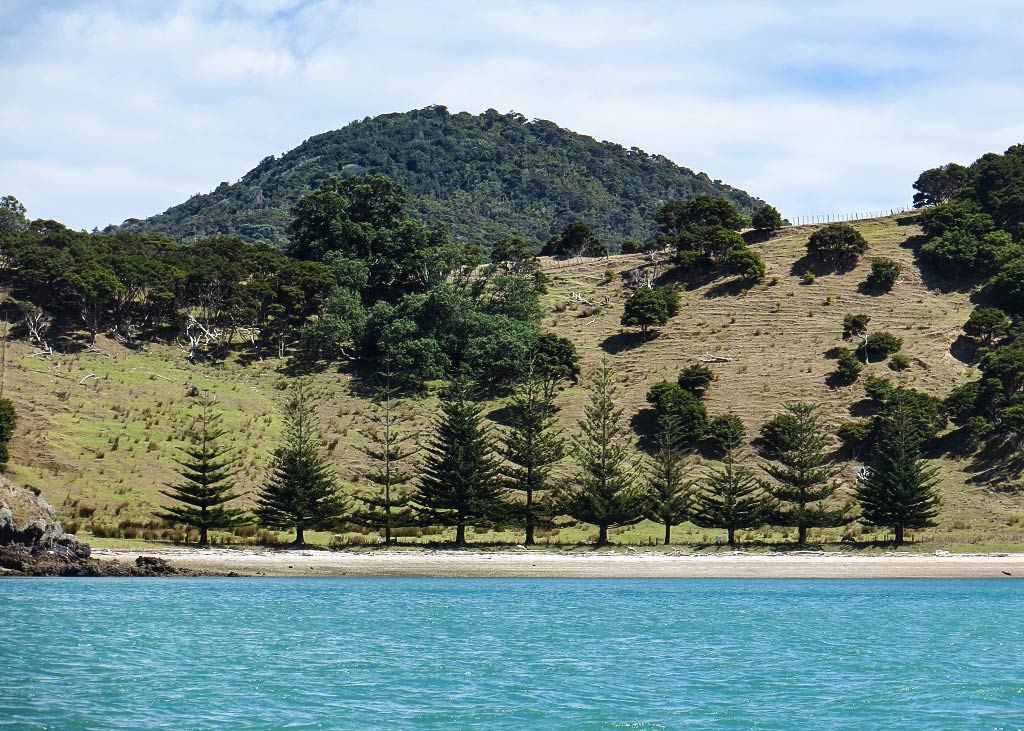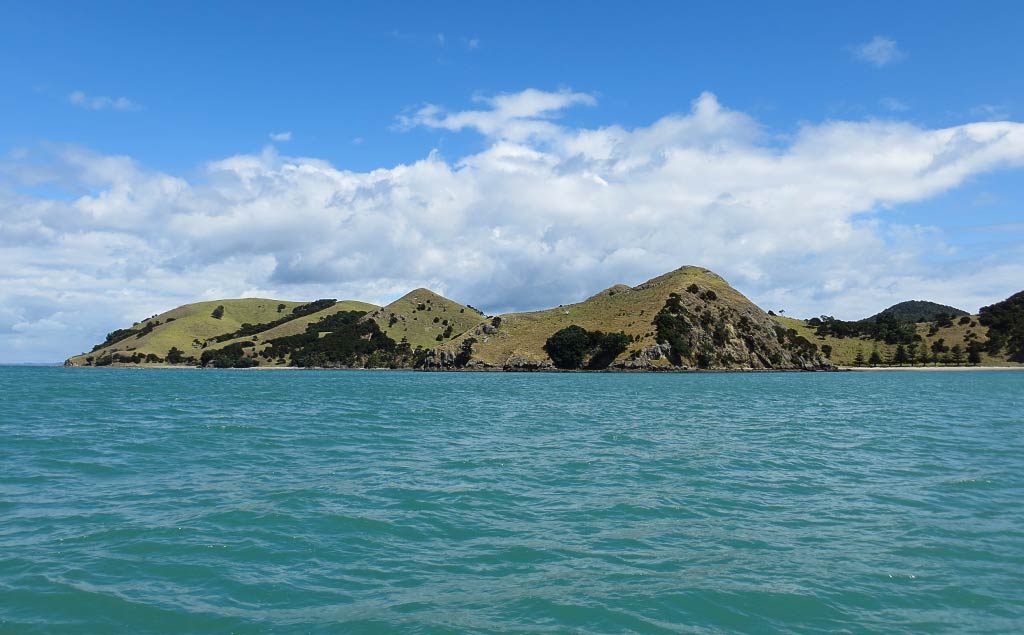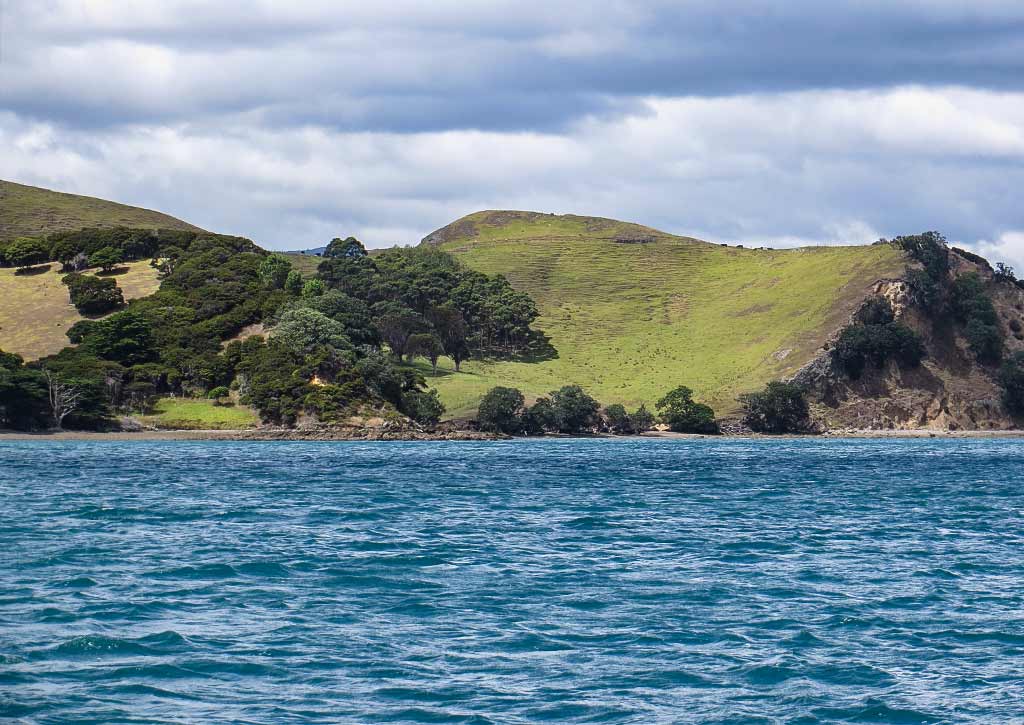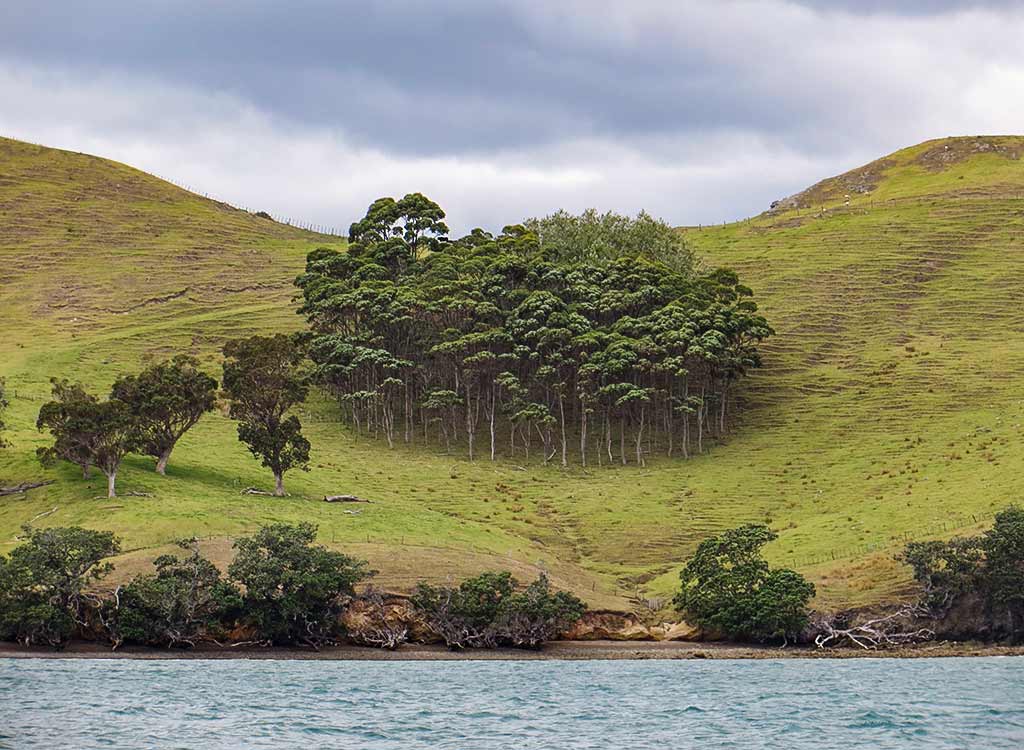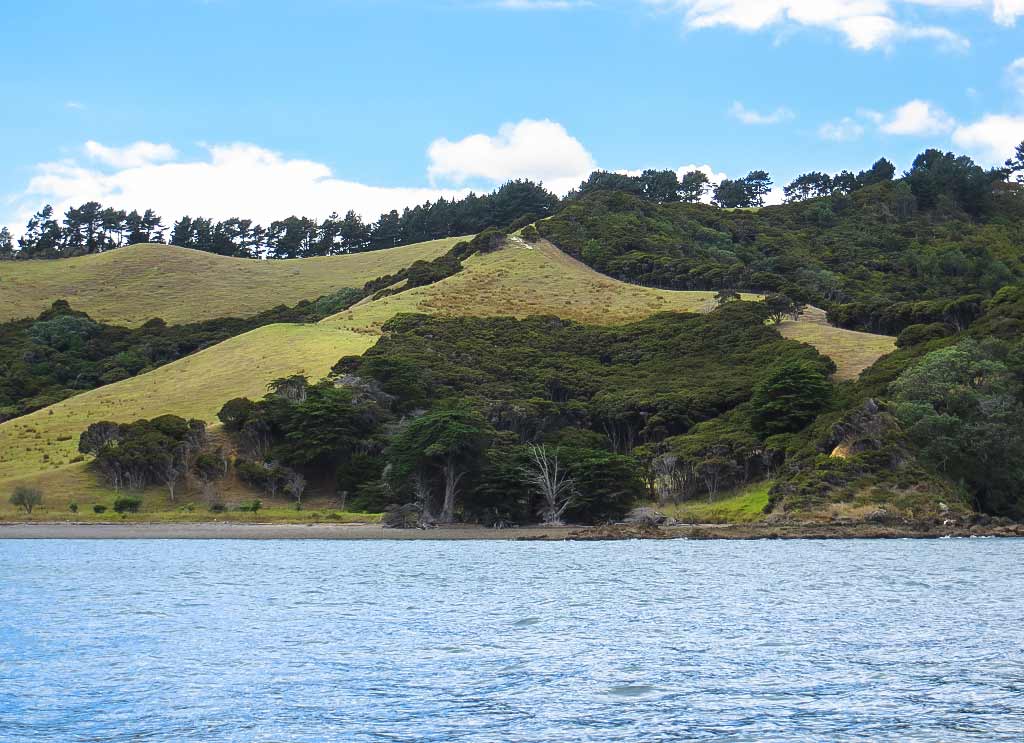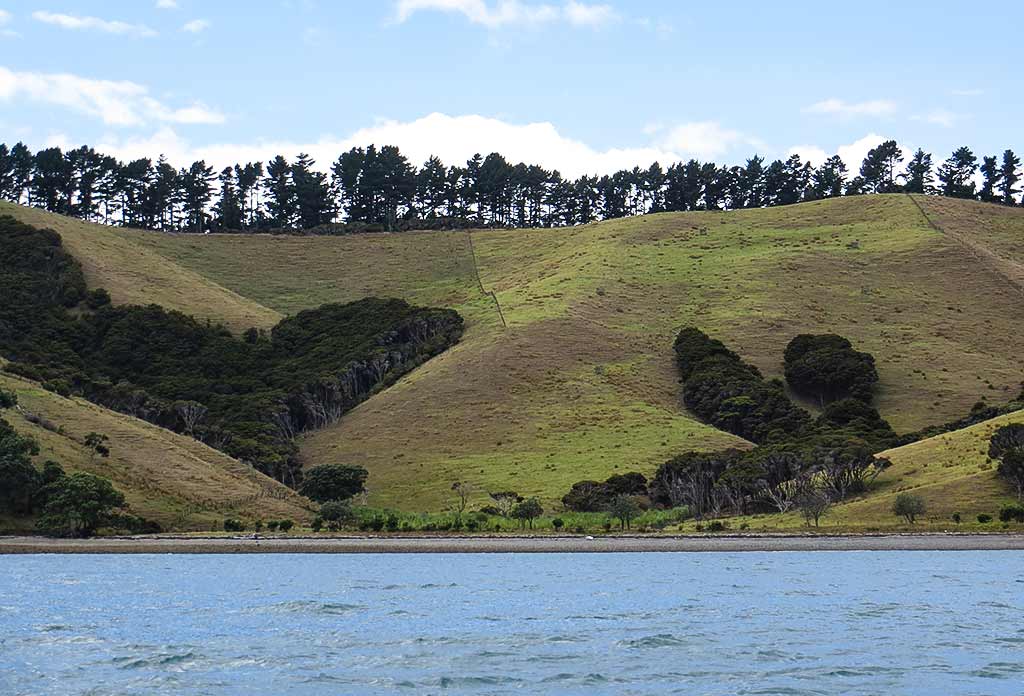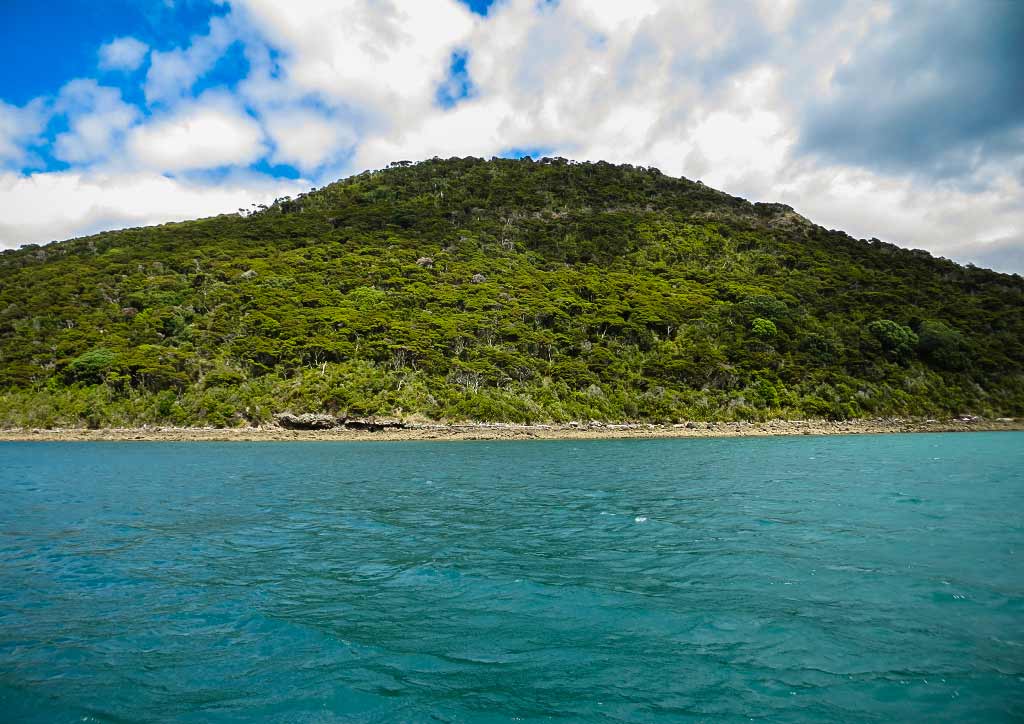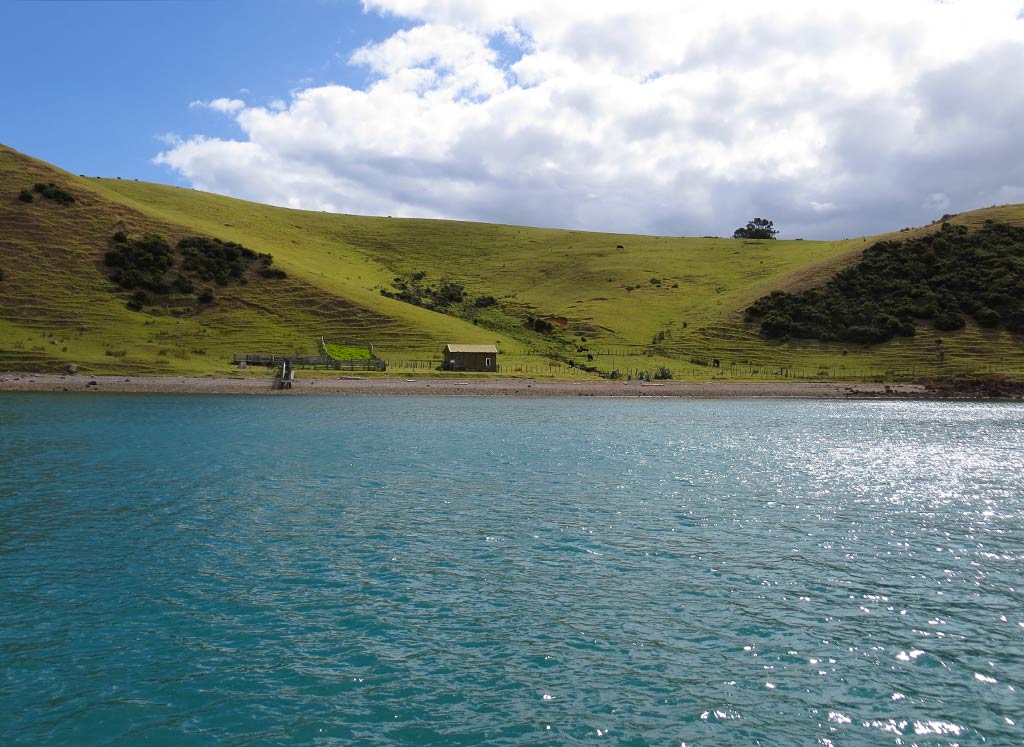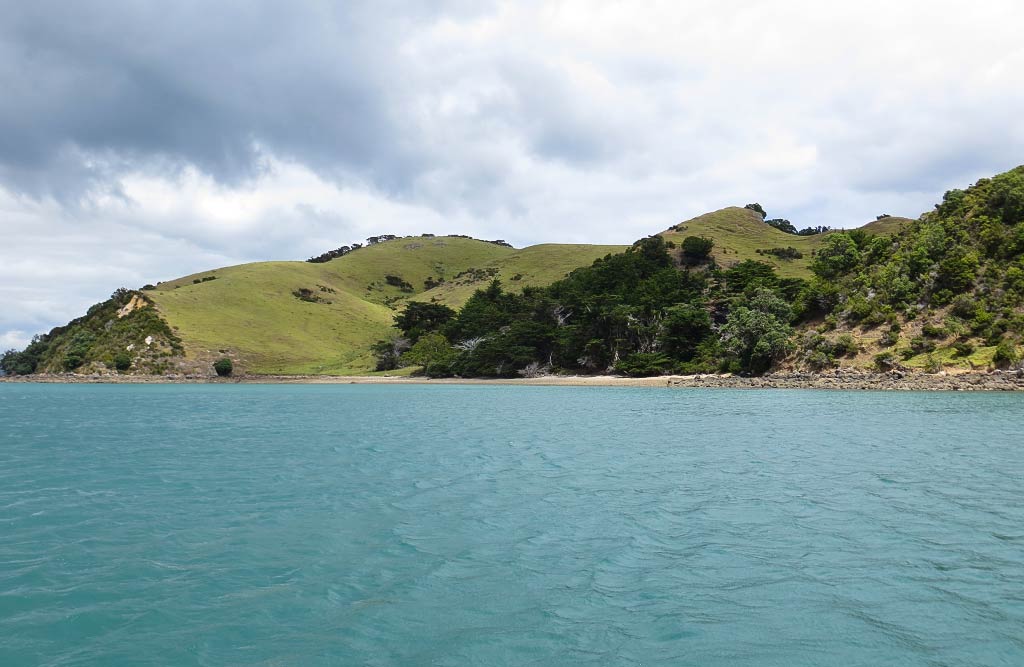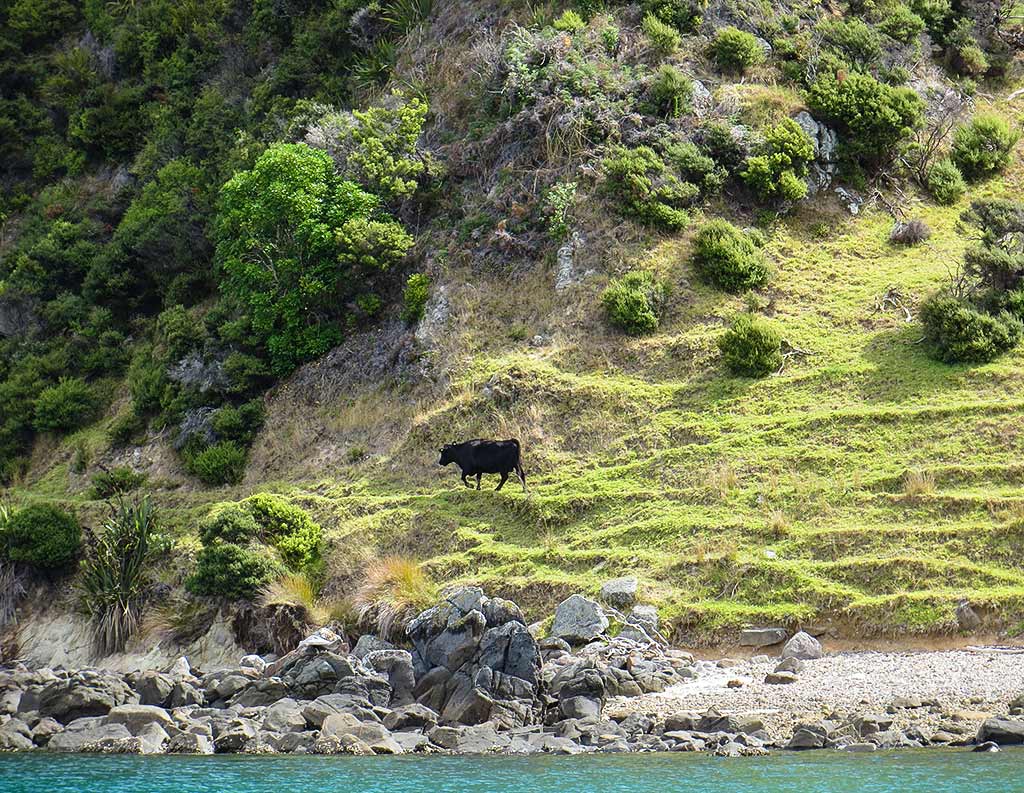February 13, 2014
We woke up to gusty wind and some rain in Woolshed Bay; so we decided to wait for conditions to lighten up before heading to our next destination, Waimate Island.
Waimate is a small island about 2 miles north of Coromandel Harbour (and about a 4-mile trip from our anchorage). This area of the peninsula becomes increasingly exposed to the effects of weather and the open ocean as one travels north. There aren’t many anchorages, and the few that do exist aren’t so much desired destinations as they are places to find shelter when traveling through through there.
I wondered if we should time our departure from Woolshed Bay to coincide with the outgoing tide, but Rich didn’t think it was necessary. By late morning, the wind and whitecaps had died down and we were starting to see some sun. As it happened, it was also slack tide. It seemed to be as good a time as any to leave.
Well, not so much. The westerly winds weren’t very strong, yet the channel was choppy and there was even some swell. By now we had a bit of outgoing current with us, but we still were only able to motor at 3 to 5 knots into the sloppy seas. It was bad enough we considered turning around and going back to Woolshed, but with conditions due to worsen the next day, we needed to get out while we could. We opted to keep chugging along.
As we motored along, we did have a good view of the harbor. On the south side we spotted the small town of Te Kouma and a few scattered houses. The north side was much drier and grassier. We checked out the unnamed bay and anchorage west of Woolshed and an exposed bay near the outer point. Woolshed Bay had clearly been the best choice. Below, a photo gallery of photos from around Coromandel Harbour (click to enlarge any photo in a gallery).
When we exited the harbor and turned north, the seas were no longer against us yet conditions didn’t feel any better. The wind had picked up to 15 knots, gusting to 20, and now we had bigger swells from the open ocean. We’d checked the weather before leaving and this is not what was advertised!
I grabbed the Thatcher guide to see if there were any interesting alternatives to this situation. As it turned out, there was something. We could turn east and get in the lee of Motutapere Island, just south of Waimate. It would be a detour but one that would make things more comfortable.
We turned east and as we headed in that direction, we got a good look at the anchorage on the north side of Whanganui island (Woolshed Bay is on its south side). It looked way too open for typical conditions and not desirable enough to visit in calm ones. We also got a good look at Motutapere Island as we motored along behind it (last photo in the gallery below) and confirmed there were definitely no anchorages there!
Once we got behind Motutapere, conditions became so much calmer and more comfortable! I worried about what it would be like motoring through the gap between Motutapere and neighboring Waimate, but the two islands plus surrounding rock islets created a protective effect for the whole area. Soon, we were in the lee of Waimate, our destination.
We headed to an area near the north end of Waimate and found a spot to anchor. The gusty winds blasted down over the hill in front of us, but the water remained calm so we felt secure and comfortable here.
Waimate was rather pretty. Our bay was gently indented, surrounded by grassy hills, a beach, and wandering cows. It reminded me of Rangipukea Island (our first anchorage off the Coromandel) but a more rugged version of it. The hills were more windswept and the beach more rubbly. Just south of us was an area of big pine trees that looked quite pretty, and I wondered if we should have anchored there. But I wasn’t going to look a gift horse in the mouth—this would do just fine!
Later in the afternoon, I headed out to the cockpit again. Much like our last bay, I felt that although this was an attractive place, it didn’t feel very good to be here. Maybe it’s the wind today, but I felt uneasy and restless. I didn’t linger outside.
We had a nice evening, having dinner and watching TV, feeling comfy while the wind blew outside. But overnight we woke to the sound of howling wind. It was only a squall but it was pretty impressive. Rich got up and saw it was at least 25 knots. Thankfully it died off and then the sound of rain began. I always love that sound, but I love it even more when I know our boat, salty form a splashy passage, is getting a rinse. Eventually we both fell back asleep. Tomorrow we’d be heading north once again.–Cyndi

